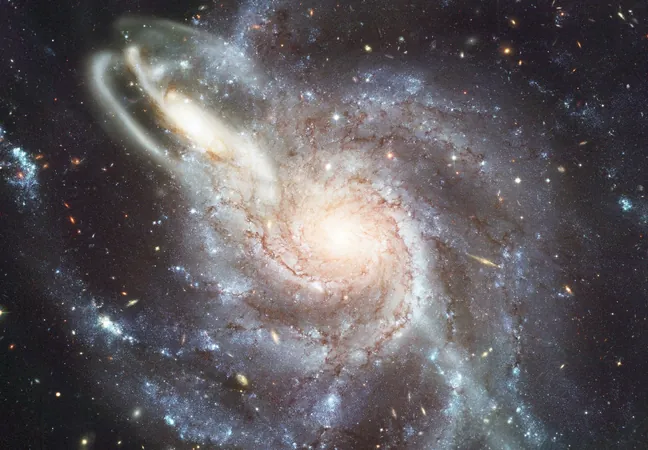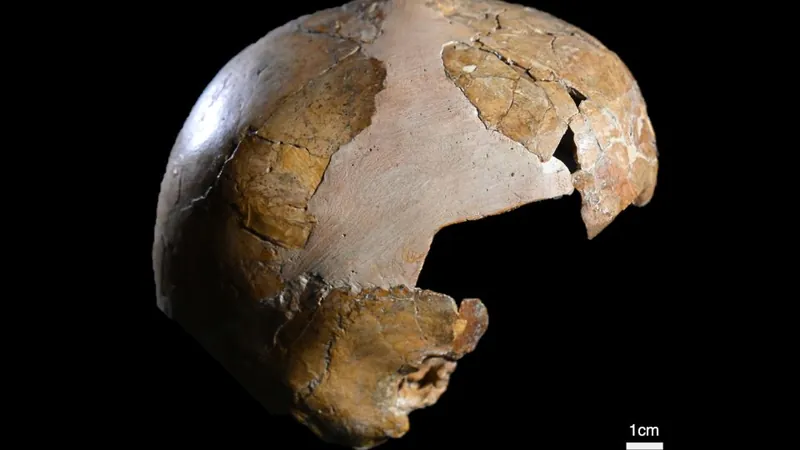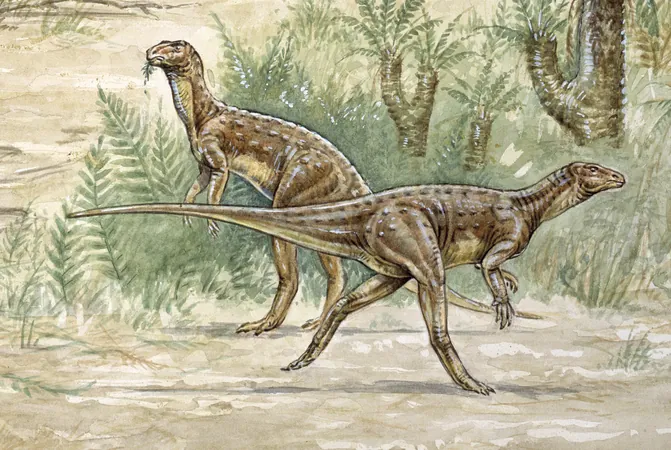
Asteroid Bennu: A Cosmic Time Capsule with Stardust Older than the Solar System!
2025-08-26
Author: Jacques
What Did NASA’s OSIRIS-REx Mission Discover?
In an astounding achievement, NASA’s OSIRIS-REx mission returned to Earth in 2023 with a treasure trove of samples from the asteroid Bennu, a cosmic giant measuring around 1,600 feet across. After seven years of space exploration, the spacecraft brought back materials that are older than our very own planet!
More than Just Space Souvenirs
These samples are not just mere rocks; they encapsulate a tale that stretches across billions of years. The collected dirt and rocks speak of dusty remnants from ancient stars, minerals shaped by water, and markings left by micrometeorite impacts.
Scientists are decoding this ancient debris, revolutionizing our understanding of planetary origins and the possible origins of life's essential building blocks.
The Shattered History of Bennu
Bennu isn't a singular rock; it’s a conglomerate of fragments from a much older parent asteroid that roamed the space between Mars and Jupiter. This parent asteroid, a melting pot of materials from different corners of the early solar system—some from near the Sun and others from far beyond—was broken apart in a cataclysmic event.
The debris eventually reassembled, giving rise to Bennu, making this asteroid a historical archive with clues from multiple phases of its formation.
Stardust: A Peek into Cosmic History
Researchers studying the Bennu samples have unearthed a rare trove of stardust—microscopic particles that predate our solar system itself. These exceptional grains can be distinguished in the lab by their peculiar isotopic patterns, shedding light on their stellar origins.
Jessica Barnes, an associate professor at the University of Arizona, stated, "These grains are pieces of stardust from long-dead stars that merged into the gas and dust cloud from which our solar system emerged." This discovery also includes organic materials with unusual isotopes that likely formed in the depths of interstellar space.
Evidence of Water on Bennu!
In a groundbreaking finding, the samples suggest that Bennu—or at least its parent asteroid—once contained water. A team of scientists detected minerals that indicate chemical alterations due to contact with liquid water, believed to have occurred at a warm temperature of about 77°F (25°C), similar to Earth’s room temperature.
Tom Zega, co-lead of the study, revealed that Bennu’s parent likely accumulated icy materials from the outer solar system, which thawed over time. This interaction of heat and water may have initiated critical chemical processes, paving the way for the emergence of life.
Bennu: A Beaten-Up Space Survivor
Bennu’s narrative didn’t end with its construction; it continues to be shaped by the harsh dynamics of space. Recent research highlighted the wear and tear on Bennu’s surface, riddled with tiny craters and blemishes caused by relentless micrometeorite impacts and solar winds.
Lacking an atmosphere for protection, Bennu experiences rapid space weathering, which alters its surface and can influence how scientists observe it through telescopes.
The Significance of the Bennu Samples
While asteroid samples are occasionally found as meteorites on Earth, many get burnt up during re-entry or become contaminated. The pristine samples collected by OSIRIS-REx, sealed immediately after collection, provide an unparalleled glimpse into the early chemistry of our solar system, helping to answer profound questions about our cosmic origins.
Bennu: More than a Cosmic Rubble Pile
What may look like a mere collection of rubble floating in space is, in reality, a cosmic time capsule, preserving the imprints of our solar system's infancy. Packed with stardust, evidence of water, and a tumultuous past, Bennu holds the secrets to understanding our universe’s evolution.
This momentous discovery by NASA signals not just a triumph for space science, but an invitation to unravel the mysteries of our origins.
Stay tuned as we continue to explore the cosmos!









 Brasil (PT)
Brasil (PT)
 Canada (EN)
Canada (EN)
 Chile (ES)
Chile (ES)
 Česko (CS)
Česko (CS)
 대한민국 (KO)
대한민국 (KO)
 España (ES)
España (ES)
 France (FR)
France (FR)
 Hong Kong (EN)
Hong Kong (EN)
 Italia (IT)
Italia (IT)
 日本 (JA)
日本 (JA)
 Magyarország (HU)
Magyarország (HU)
 Norge (NO)
Norge (NO)
 Polska (PL)
Polska (PL)
 Schweiz (DE)
Schweiz (DE)
 Singapore (EN)
Singapore (EN)
 Sverige (SV)
Sverige (SV)
 Suomi (FI)
Suomi (FI)
 Türkiye (TR)
Türkiye (TR)
 الإمارات العربية المتحدة (AR)
الإمارات العربية المتحدة (AR)